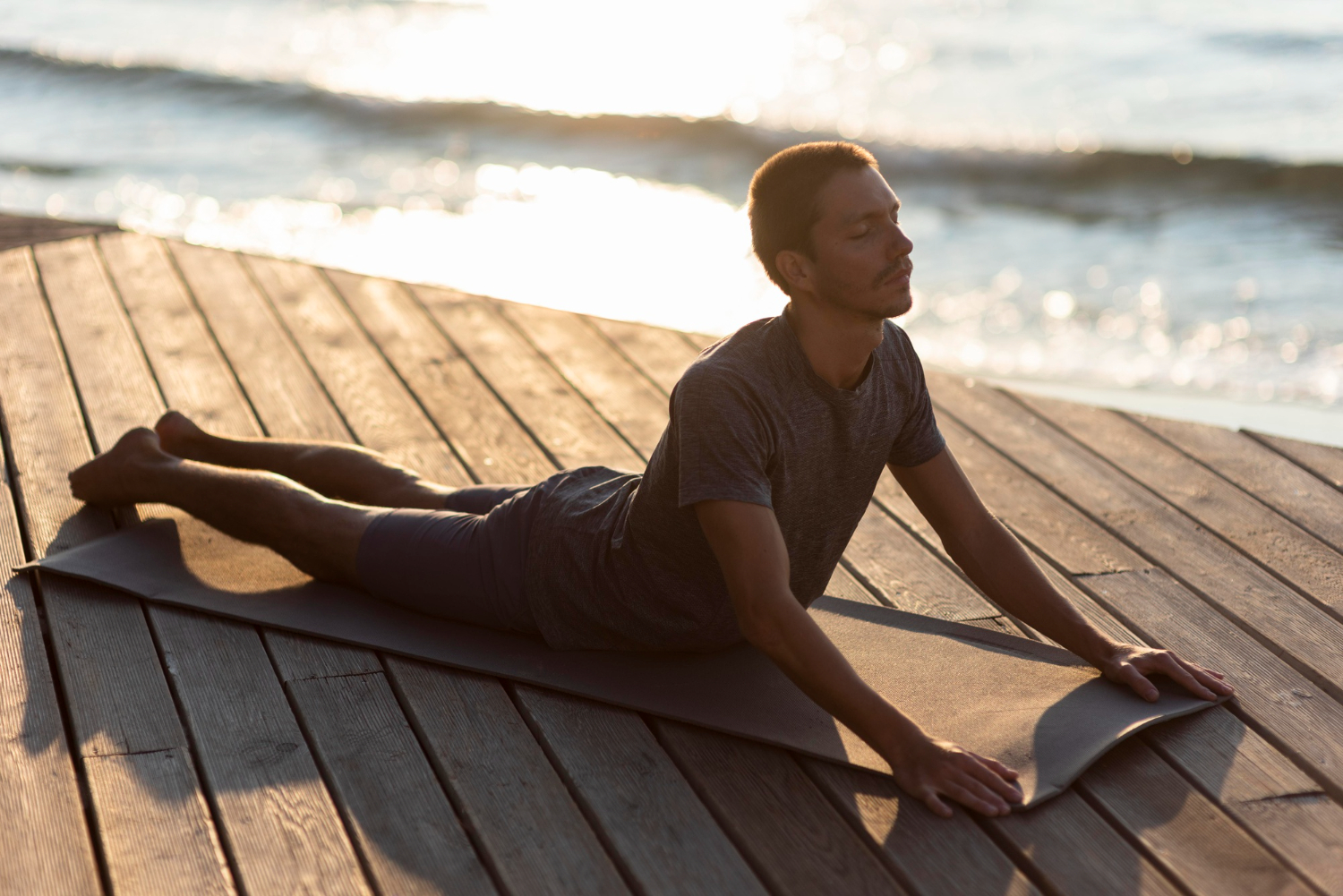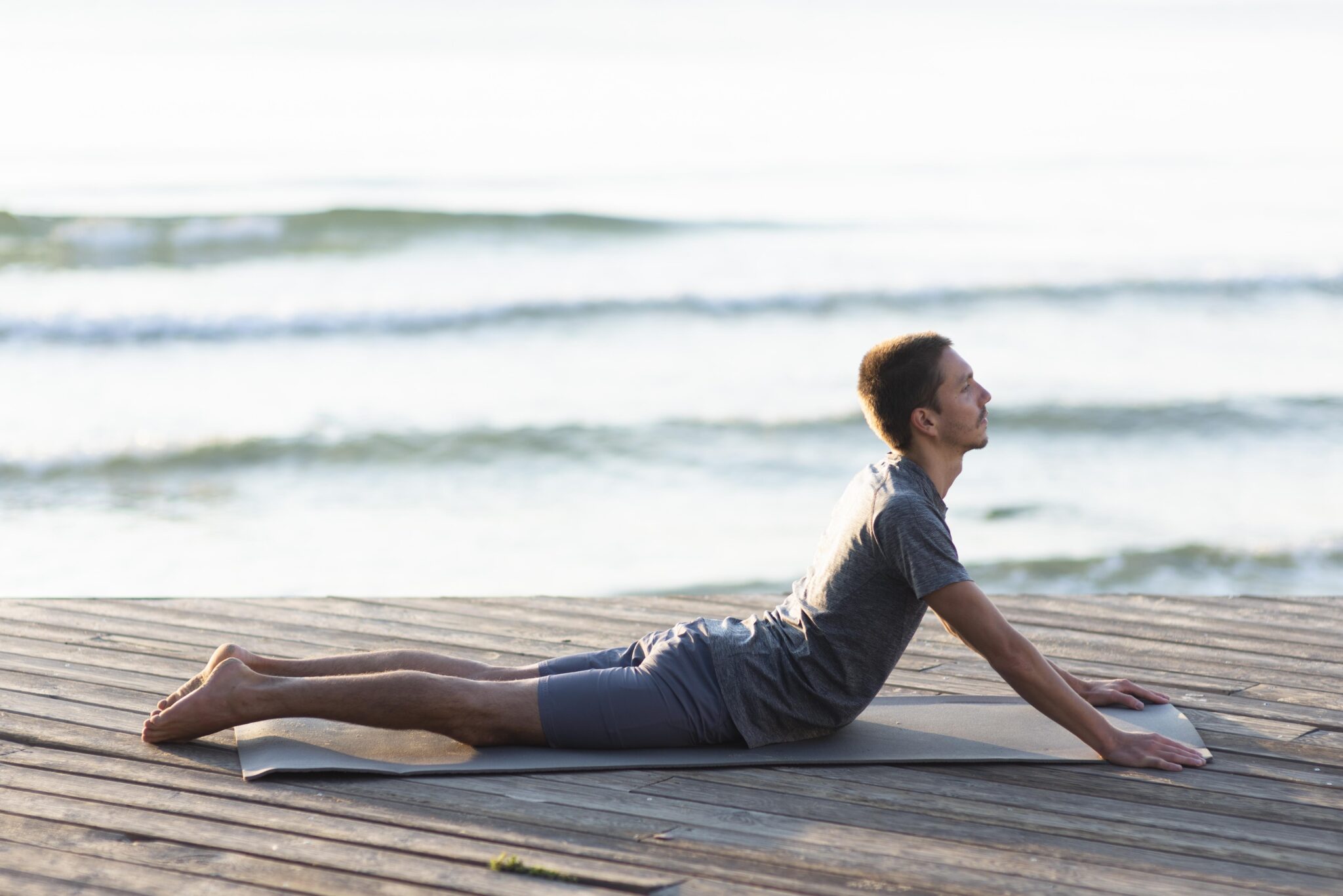
Stress has a way of sneaking into every part of life — tightening your shoulders, shortening your breath, and leaving you restless at night. The good news is that relief doesn’t have to be complicated. Simple, controlled breathing exercises to enhance relaxation can create a powerful reset for both mind and body. When paired with yoga, these practices don’t just ease tension in the moment — they retrain your nervous system to respond differently to pressure, giving you calm on demand no matter where you are.
Breathe, Move, Stay: Yoga That Calms You Fast
Stress isn’t just a mental weight — it’s physical, hormonal, and behavioral. It builds silently until your sleep is shot, your breath is shallow, and your patience wears paper-thin. That’s where yoga steps in, not as a panacea, but as a structured interruption. It doesn’t erase your problems. What it does is shift how your body holds them. Through movement, breath, and stillness, it offers something rare in everyday life: a pause button with physiological impact. You don’t need enlightenment — you need 20 minutes and a floor.

What Yoga Actually Does
A lot of people assume yoga is just stretching with incense. It’s not. What makes yoga unique as a stress intervention is how it affects the brain and nervous system in tandem. Multiple studies now confirm that yoga leads to significant improvements in well‑being. That includes lower cortisol levels, decreased amygdala activation, and improved sleep quality. But more than metrics, it creates pattern breaks. When your stress response becomes habitual, yoga disrupts it with sequences that require awareness. You don’t get lost in your thoughts — you get anchored in your body, and that’s where the tide starts to turn.
Why Breath Isn’t Woo-Woo — It’s Strategy
Stress changes how you breathe. You inhale fast, high, and shallow. This feeds anxiety, which feeds shallow breathing — a loop. Yoga cuts that loop through intentional breathwork that engages the parasympathetic nervous system. This isn’t just calming — it’s a neurological shift. Your heart rate slows. Blood flow returns to your prefrontal cortex. The fog starts to lift. Most importantly, it happens in real time. You can be in traffic or standing in line and use what you practiced on the mat. That’s not spiritual. That’s tactical.
Simple Breath Practices That Work Right Now
You don’t need to nail a handstand to benefit from yoga. In fact, one of the most effective tools is also the most invisible: breath regulation. Techniques like box breathing, 4-7-8 cycles, and alternate nostril breathing have real impact. Used regularly, they’ve been shown to support emotional stability, sleep quality, and even immune function. You can start with something as simple as controlled breathing exercises to enhance relaxation. No apps, no equipment. Just five minutes with your eyes closed, counting your breath, and choosing stillness instead of reactivity.
Yoga Isn’t Just for Flexibility — It’s Clinically Backed
Generalized anxiety disorder doesn’t go away with good vibes and lavender oil. But movement-based interventions like yoga are now being taken seriously in clinical settings. One study found that yoga improves symptoms of generalized anxiety as effectively as some traditional therapeutic approaches. The trick isn’t in the poses — it’s in the structure. You’re asked to focus, to breathe, to hold, to release. It mimics exposure therapy: your body meets discomfort, and instead of fleeing, you learn how to stay. Over time, that rewires more than muscles. It shifts your default response to pressure.
One Paragraph, One Perspective Shift
People underestimate how much stress is internal narration. You don’t just feel overwhelmed — you’re telling yourself you’re failing, that you can’t handle it, that it’ll never stop. Yoga gives you a container to notice that. To slow down enough to hear the tone in your own head. Pair that with approaches for strengthening your mindset, and now you’re not just moving through stress — you’re reshaping the mental habits that keep it stuck. This is the underrated power of daily practice: not flexibility, but recalibration.
The Core of Mindfulness Is Noticing You Left It
Mindfulness is often presented as something serene and mystical, but at its core, it’s a tracking device. It alerts you when your mind drifts to panic, judgment, or catastrophizing. The act of noticing is the reset. In yoga, you return over and over to the breath — and not because the breath is magic, but because it’s now. When you focus your attention on the breath, you interrupt the default stress script. You don’t need to fix the situation. You just need to anchor in something neutral. That’s what yoga teaches better than almost anything else: how to start again, without flinching.
Yes, It Can Be Measured — and It Works
Skeptics often ask for data. Fair. Stress is real, and its effects are measurable. The good news is: so are yoga’s. A 2024 randomized control study showed statistically significant improvements in stress across participants after just eight weeks of yoga intervention. What mattered most wasn’t the style — it was the consistency. Practicing 3–4 times per week built enough baseline regulation that external stressors had less grip. That’s what you’re building toward: not zero stress, but an internal system that’s harder to hijack.
Managing anxiety doesn’t require a retreat, a guru, or a spiritual rebrand. It requires reps. Reps of breath. Reps of movement. Reps of choosing pause over panic. Yoga offers the framework, but the power is in the repetition. You show up, you practice, and over time, the space between stress and response starts to widen. That space is where self-regulation lives. It’s where clarity shows up. And once you’ve felt it, even once, you know it’s accessible. Not easy, but available. That alone can change everything.
Discover the transformative power of yoga and enhance your well-being by visiting Yoga Health & Fitness Benefits for expert tips, classes, and resources tailored to your needs!
